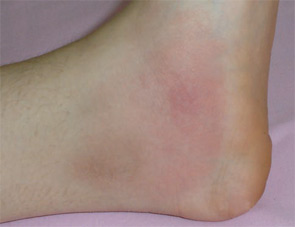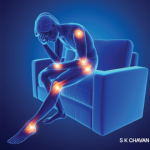The differential diagnosis of FMF is quite large (see Table 1, above). Ethnicity is an important factor, although it must be remembered that FMF has been encountered in all groups, including Japanese. All autoinflammatory syndromes have a number of characteristic features which should be remembered in dealing with a patient with a periodic fever syndrome.

Differential Diagnosis
CIAS-1-pathies cryopyrin-associated periodic syndromes (CAPS): Three diseases have been associated with mutations in this group: the familial cold autoinflammatory syndrome (FCAS), Muckle-Wells syndrome (MWS), and neonatal-onset multi-system inflammatory disease (NOMID, also known as chronic infantile neurologic cutaneous articular [CINCA] syndrome). CIAS-1-pathies, or CAPS, are a group of autoinflammatory diseases caused by mutations in the gene coding for cryopyrin.2,5,13,14 Cryopyrin has a pyrin domain and is a part of the macromolecular complex called the inflammasome which mediates IL-1β activation.
Among these three major diseases, FCAS represents the mildest and NOMID the most severe form of the disease complex.14 All are characterized by fevers and a non-pruritic, urticarial rash, usually presenting in infancy (or later in MWS), and they may have some overlapping features, described below. FCAS presents with attacks precipitated by cold.13 The main differentiating feature of MWS is a hearing defect. The names of the third disease in this group reflects its characteristics; NOMID for the onset and CINCA for the involved systems. NOMID, and sometimes the other diseases, tend to have more persistent features and may lack the typical attacks which may prove important in differential diagnosis.13,14
Hyperimmunoglobulenemia-D with periodic fever syndrome (HIDS): HIDS is an autosomal, recessively inherited, periodic fever syndrome caused by mutations in the gene MVK, which codes for the enzyme mevalonate kinase.15,16 The majority of reported patients are from The Netherlands and France. However, cases have been reported worldwide. The attacks typically last for two to seven days. Along with the fever, abdominal pain, rashes, diarrhea, vomiting, and cervical lymphadenopathy are common.15,16 Arthralgia and arthritis and hepatosplenomagaly may occur.
Tumor necrosis factor receptor–associated periodic syndrome (TRAPS): This autosomal dominantly inherited disease is associated with mutations on chromosome 12 in TNFRSF1A, the gene encoding the 55-kDa receptor for TNF.17 The attacks last longer than a week, and muscle involvement is a frequent feature in these patients, usually affecting only one muscle group at a time.
Other rare diseases: Pyogenic sterile arthritis, pyoderma gangrenosum, and acne syndrome (PAPA), Crohn disease, and Blau’s syndrome are among the other monogenic autoinflammatory diseases. Caspase associated recruitment domains (CARD) 15 mutations have been shown in 40% of Crohn’s, 50% of Blau’s, and 90% of early-onset sarcoidosis patients.2 CARD is also a part of the inflammasome.



